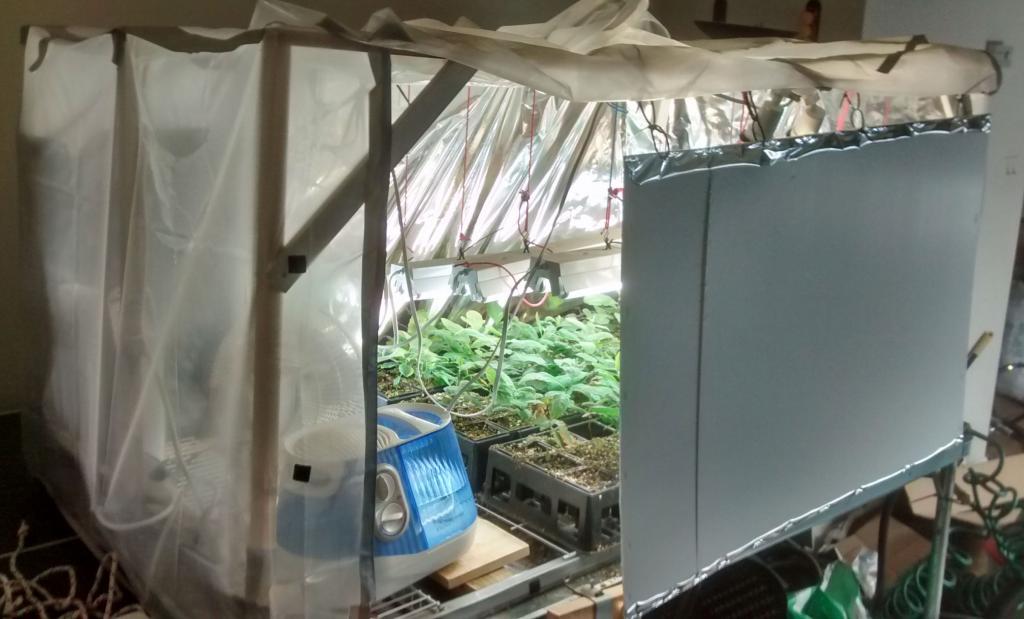yoderjac
5 year old buck +
What you are looking at above is actually 3 lights (6 tubes) with room for 4 trays. Right now the third (rear) light is lifted (but running) and I have a humidifier under it because I don't need the 3rd and 4th trays right now.CAS_HNTR;747619 said:What's the thoughts on RM18 trays per light and visa versa. Looks like you have 2 "work" lights (4 total tubes) i across the tray (3 cell direction)....would running one "work" light (2 tubes) down the center of the tray be too little light?
My table top indoor greenhouses are 30"x 6' and 38"x6' My open areas with lights over floor trays are 6' x 4'. With my table top units 4' x 30" or 38" are for plants. The small unit holds 4 Express trays. The larger unit holds 6 of them. The other 2 feet hold equipment (humidifier, fan, heater, etc.). The small unit has 3 florescent lights and the large unit holds 4 of them.
So the smaller unit delivers about 150 lumens per plant at the light and the larger unit about 133 lumens per plant. Light has not been a limiting factor at these levels.
I found this level of light adequate for growing seedlings for a couple months prior to taking them outside. I don't know if you could get away with less light with no ill effects. I do know some guys are looking at significantly more light: http://www.qdma.com/forums/showthread.php?t=67633
I'm not sure if the added light will improve their results over mine or not.
Thanks,
Jack


